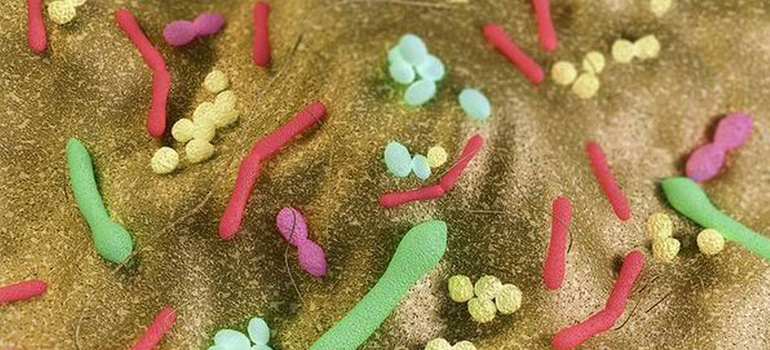
A study by IIT Madras researchers of 36 strains of gut bacteria commonly found in the gut reveals their metabolism and could bring added rigour into the development of probiotics. Probiotics are cocktails of helpful bacteria which, among other uses, are prescribed to alleviate digestive imbalances.
The human gut microbiome has a huge number of beneficial bacteria, collectively called commensals, living in it. Key among these are the bacteria of the Bifidobacterium genus. Bifidobacterium adolescentis and B. longum are found in adult human gut whereas B. bifidum are found in infant gut. More than 80 species of Bifidobacterium are found in the human gut of which 36 strains comprising 20 species have been studied by the researchers through metabolic network modelling. Bifidobacterium is one of the largest genera among gut bacteria and its species are known to be early colonisers of the breastfed infant gut.
Little is known about the key metabolic differences between different strains of this genera and consequently their individual commercial uses. This work has classified the studied strains of these bacteria into three groups. Specifically, the researchers estimate the ability of the bacteria to produce short-chain fatty acids, which maintain the acidity level (pH) of the gut milieu. In the studied strains of bacteria, the researchers find that acetate production is strain-specific, unlike the production of lactate.
“Knowing which bacteria can produce acetate and lactate under a variety of conditions is very helpful. It determines the power of these bacteria to acidify the gut and make it harder for harmful bacteria to grow,” says Karthik Raman in an email to The Hindu. Dr. Raman and Dr. N.T. Devika, the first author, are from the Bhupat and Jyoti Mehta School of Biosciences at IIT Madras, Chennai. The results of their study have been published in the journal Scientific Reports.
The group also identified critical enzymes essential for the metabolism of some strains. “We [identify significant] reactions across these organisms, which are important for their survival – it would help if antibiotics do not mess with these reactions, as it would cause further insult to the gut. This knowledge, in the longer run, will be very useful to systematically design probiotic cocktails,” explains Dr. Raman.
The group uses the technique of constraint-based modelling of the system. “This is like a model of cellular trafficking of molecules,” says Dr. Raman. It amounts to estimating which are the reactions that lead to production of various molecules and under what different conditions. “These conditions could arise out of different diets, and finally impact the gut microenvironment, and ultimately the growth and composition of the different bacterial species in the gut,” he says.
The study underlines the power of analysing metabolic capabilities to define the properties of the human gut microbiota and also can be leveraged for commercial purposes to produce probiotics. While in the last few years, there has been significant improvement in the composition of probiotics, their development is still predominantly by trial and error, and this study is a step towards a more methodical approach.
Original News Link
https://www.thehindu.com/sci-tech/science/iit-madras-study-reveals-metabolism-of-key-gut-microbiota/article31821977.ece#:~:text=A%20study%20by%20IIT%20Madras,prescribed%20to%20alleviate%20digestive%20imbalances.